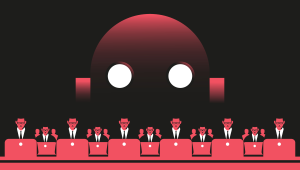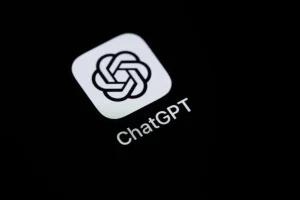The Rising Rivalry Microsoft vs OpenAI

The tech world witnesses an evolving relationship between two AI titans. Microsoft and OpenAI, once close partners, now appear to be on diverging paths.
The Unraveling of a “Bromance”
Once hailed as the “best bromance in tech,” the relationship between Microsoft and OpenAI is fraying. Initially, it was a classic partnership: Microsoft provided funding and technology to OpenAI, which in turn offered Microsoft exclusive access to GPT. This synergy began to erode when OpenAI declared a shift towards a for-profit model. Microsoft’s significant backing of OpenAI made its expectations clear; it sought a substantial stake as OpenAI navigated this transition. Yet, rumors suggest OpenAI is already seeking alternative computing partners, casting a shadow over its former ally.
Microsoft’s Strategic Shift
In response to OpenAI’s pivot, Microsoft is doubling down on its own artificial intelligence endeavors. This strategic move could signal a burgeoning competition between the two former allies. By channeling more resources into its AI products, Microsoft appears prepared to challenge OpenAI head-on. With both companies advancing on parallel tracks, industry observers are keenly watching how these changes will influence the AI landscape.
Greg Brockman’s Return
OpenAI co-founder Greg Brockman is making a comeback after a sabbatical, during which he pondered his next steps. His return raises questions: will he reintegrate with OpenAI’s leadership, or diverge towards Microsoft? This crossroads presents a pivotal moment that could redefine allegiances within the tech community. Observers anticipate Brockman’s decision with bated breath, understanding its potential to reshape sector dynamics. The anticipation adds another layer to the unfolding drama between Microsoft and OpenAI.
Impacts on the AI Industry
The unfolding rivalry between Microsoft and OpenAI is not just corporate drama; it bears significant implications for the AI industry. As both giants invest heavily in artificial intelligence, their innovations could accelerate technological advancements. However, the competitive tension might also lead to fragmented efforts or conflicting standards, challenging industry cohesion. Stakeholders are urged to consider these dynamics carefully, as the decisions made today will influence AI development for years.
Navigating Competitive Waters
For Microsoft and OpenAI, the path forward is fraught with both challenges and opportunities. Competitively, each must leverage its strengths while addressing weaknesses. Microsoft, with its vast resources, is well-positioned to make substantial advances in AI technologies. Meanwhile, OpenAI’s agility and innovative edge remain formidable. How they navigate these waters could set precedents for future tech partnerships and rivalries. The outcome of this saga might well define industry norms.
Broader Implications for Tech Partnerships
The evolving dynamics between Microsoft and OpenAI offer lessons for tech alliances globally. As partnerships mature, aligning interests and sustaining trust become crucial. Misalignments, like those between Microsoft and OpenAI, underscore the need for transparent communication and adaptable strategies. The unfolding events serve as a reminder that even the most promising partnerships require vigilant maintenance. Observers suggest that a balanced approach, blending collaboration and competition, might yield the most fruitful outcomes.
A New Chapter for AI
As OpenAI and Microsoft forge their paths, a new chapter in AI innovation is being written. It’s a story of transformation, rivalry, and potential. This journey, marked by both challenge and change, offers a glimpse into the future of artificial intelligence. Industry watchers remain attentive, cognizant of the profound impact these developments will have not only on technology but on society at large.
The story of Microsoft and OpenAI is a testament to the fast-evolving nature of tech partnerships.
As these giants navigate their rivalry, they offer invaluable insights into the future of AI.





